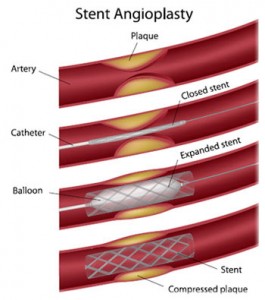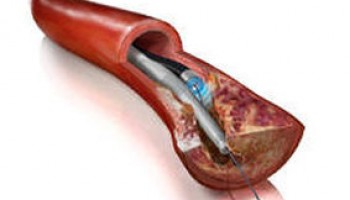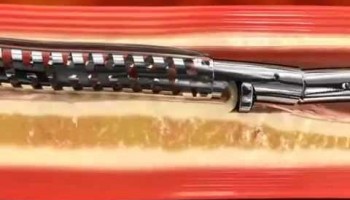TREATMENTS
 Interventional radiologists pioneered angioplasty and stenting, which was first performed to treat peripheral arterial disease. Using imaging for guidance, an AVIC specialist threads a catheter through the femoral artery in the groin to the blocked artery in the legs. Then he inflates a balloon to open the blood vessel where it is narrowed or blocked. In some cases this is then held open with a stent, a tiny metal cylinder. This is a minimally invasive treatment that does not require surgery, just a nick in the skin the size of a pencil tip.
Interventional radiologists pioneered angioplasty and stenting, which was first performed to treat peripheral arterial disease. Using imaging for guidance, an AVIC specialist threads a catheter through the femoral artery in the groin to the blocked artery in the legs. Then he inflates a balloon to open the blood vessel where it is narrowed or blocked. In some cases this is then held open with a stent, a tiny metal cylinder. This is a minimally invasive treatment that does not require surgery, just a nick in the skin the size of a pencil tip.
An atherectomy is a procedure in which an AVIC expert inserts a specialized catheter into a blocked artery to remove a buildup of atherosclerotic plaque from within the vessel. The catheter contains a sharp rotating blade, grinding bit, or laser filament, as well as a collection system that permits removal of the plaque from the wall of the vessel and collection or suction of any resulting debris.
Atherectomy is typically used to treat blockages where angioplasty and stenting cannot be performed. This may be as a result of anatomical factors, the location of the blockage, the hardness of the plaque, or other factors. More commonly, atherectomy is used as a complement to angioplasty and stenting, removing significantly hardened blockages, and allowing for the insertion of a balloon and stent. A stent is a small metal device that helps to prevent a blockage from re-forming at the same location.


